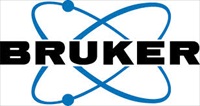Members Login

Channels
Special Offers & Promotions
The Weizmann Institute of Science Installs 15 Tesla Ultra-High Field Preclinical MRI System to Further Accelerate Multidisciplinary Research
Weizmann Institute completes installation of system following start of EU grant funding for multicolor MR imaging
 The Weizmann Institute of Science in Rehovot, Israel, has announced the installation of the Biospec® 15.2 Tesla USR™ preclinical ultra-high field magnetic resonance imaging (MRI) instrument from Bruker. The new instrument is installed in the Daniel Wolf building of the Department of Chemical Research, and is used by the MRI Biosensors laboratory, led by Dr. Bar-Shir, Prof. Lucio Frydman and Prof. Michal Neeman, to open new frontiers in molecular and microscopic imaging, adding to the team’s existing world-class MRI instruments.
The Weizmann Institute of Science in Rehovot, Israel, has announced the installation of the Biospec® 15.2 Tesla USR™ preclinical ultra-high field magnetic resonance imaging (MRI) instrument from Bruker. The new instrument is installed in the Daniel Wolf building of the Department of Chemical Research, and is used by the MRI Biosensors laboratory, led by Dr. Bar-Shir, Prof. Lucio Frydman and Prof. Michal Neeman, to open new frontiers in molecular and microscopic imaging, adding to the team’s existing world-class MRI instruments.
The new 15.2 Tesla MRI is one of the latest MRI instruments from Bruker to be installed on site in Israel, alongside the Bruker BioSpec 4.7 Tesla MRI and the Bruker 400WB (wide-bore) spectrometer. The instrument will enable multiplexed imaging, not previously available to the institute in its current MRI capabilities, with the aim to develop, optimize, and implement genetically engineered reporter systems for MRI with artificial “multicolor” characteristics. The extremely high spatial resolution of the 15.2 Tesla MRI will increase the number of artificial colors that can be observed, and open new avenues for monitoring biological multiplexity.
The Weizmann Institute is a world-class institution in MRI research, with specialized capabilities in the Bar-Shir Laboratory and the Neeman Laboratory. The Neeman lab combines cutting-edge preclincal MRI experience with the ability to monitor in vivo biological variables non-invasively in order to track the progression of diseases, such as cancer, or of intervention in the same living animal, which greatly improves biological and translational relevance. The Bar-Shir lab aims to develop new biosensors and tracers for MRI applications by using synthetic chemistry, nanotechnology and molecular biology approaches. Such biosensors will help scientists around the world to study biological events longitudinally and non-invasively in deep tissues of live animals.
Dr. Amnon Bar-Shir, Department of Organic Chemistry at theWeizmann Institute of Science, stated: “We feel this new installation will be a real game changer for our facility. The new 15T MRI will give us superior spectral resolution and boosts the signal-to-noise ratio for higher spatial resolution and faster measurements. The new instrument will facilitate the research of our world-class team and will reinforce Weizmann’s position as one of the premier centers in the world for MR research.”
Prof. Frydman is a leader in the fields of NMR and MRI, whose research focuses on developing new methodologies for accelerating the acquisition, improving the sensitivity and enhancing the resolution of both spectra and images. Frydman says: “The infrastructure that is being created here will allow us, in combination with novel ultrafast MRI and MRS methods, progress in nuclear hyperpolarization, the development of new contrast agents and CEST sensors, and advanced biological techniques, to monitor a wide range of biologically relevant processes. Furthermore, the ultrahigh fields in question will allow us to measure a unique array of metabolic variables, while linking them with morphological tissue information and with dynamic information about perfusion and diffusion. This is truly unique information that will surely revolutionize our understanding about cellular mechanisms, and the function of healthy organs, and will have important consequences in terms of elucidating the onset and progression of diseases.”
Dr. Wulf I. Jung, President of the Bruker BioSpin Preclinical Imaging division, added: “We are extremely pleased to partner with the Weizmann Institute and provide the enabling MRI research tools they need to advance the scientific understanding of the biomolecular processes of many diseases, as well as the understanding of advanced bio-materials that will impact many emerging diagnostic and therapeutic approaches.”
The BioSpec® product series is designed for the emerging market of preclinical and molecular MR imaging and MRI research. State-of-the-art MRI CryoProbe™ technology combined with ultra-high field USR magnets deliver high spatial resolution in vivo at highest stabilty, thus enabling customers to come closer to the molecular and cellular level research they desire. Due to the largest preclinical portofolio of sequences and in vivo optimized measurement protocols, virtually any small animal MR imaging application in life science, biomedical and preclinical research can be conducted.
Media Partners


